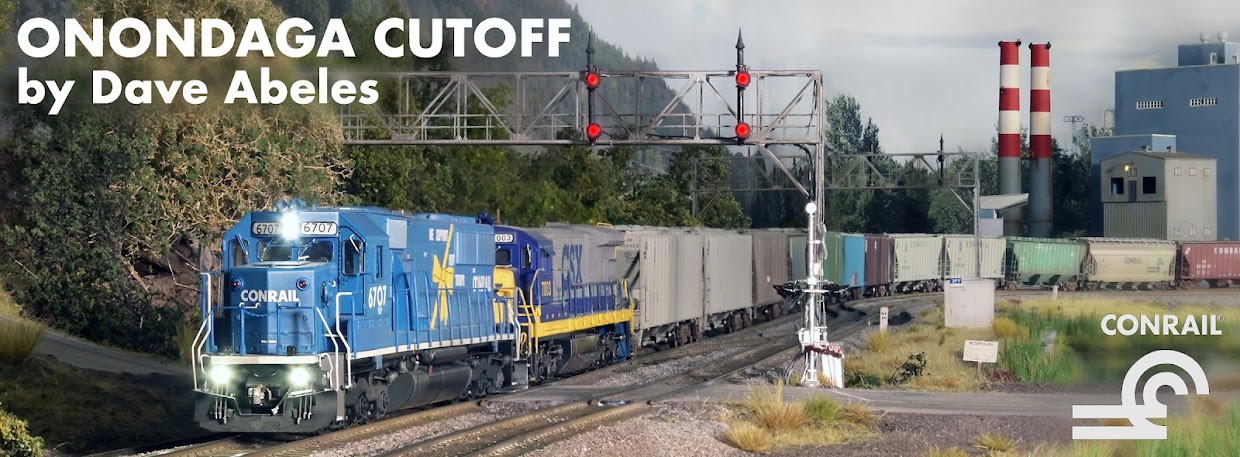Since the Onondaga Cutoff was designed for operations, it was critical to the construction effort to have operating sessions sooner than later. In addition to having fun, the sessions can teach us about what needs to be improved about the track and capacity of the railroad. Changes and upgrades can be made to the track and infrastructure much more easily before scenery is completed.
Therefore, I used a variety of temporary structures early on. These were important to give operators a feel for what would be there eventually, and provided cues for fun operations at the same time. One of those was the enginehouse on the M&E. This was a structure I'd had since about 1985 on my first layout, and it served its time well as a stand-in on the OC. Now it was time to upgrade.
I choose one of the 'Kitbasher Series' kids from Rix Products/Plastruct, which fit my vision for the modern enginehouse that would represent the shops and the sign-up office for crews on the M&E. It includes doors and window frames, which I cut in as I saw fit for the entrance and yard office. I also framed out a small office in the corner of the interior.
While the structure progressed, I graded the foundation area with sculptamold, filling in any gaps between the yard surfaces and the fascia. Styrene strips were used to frame out the edges of the pour I would make for the concrete floor of the shops.
Smaller strips were tucked in along the gauge side (inside) of each rail for the pour. I mixed a batch of hydrocal plaster to the consistency of loose sour cream - thick, but pourable. It was poured along a guide dowel into the corners first, and then tamped down to minimize air bubbles. After about 15 minutes it was hard enough to gently pull away the forms, and shape the edges accordingly.
After it cured overnight, I stained the new foundation with a variety of burnt Sienna and gray colors to achieve a look of well-worn concrete. Once the paint dried I weathered the surface with chalks and black stains. As this is a light repair facility, I did not include any inspection pit or drop tables - this tiny facility for a short line wouldn't have that sort of investment.
I added interior lighting and some interior details, enough to suggest a well-equipped facility for inspections and repairs. The structure was weathered with dull coat, then just a light application of pastels and oil washes to replicate a well-used but newer and well-maintained structure.
A wheelset storage track was added before a layer of black cinder and yard ballast, which is shown above curing with some sand piles and grit along the rails.
Next steps here are ballast highlights, vegetation, and some more detail to complete the scene. M&E crews will now have a much more prototypical scene from which to start and end their runs!





That came out really nice. I've never tried pouring a plaster base (or road) before but I will need to try. Is it difficult to keep the flangeways for the rails clear of plaster? Is the plaster painted afterwards or stained?
ReplyDeletehttp://ekbflorr.blogspot.com/
Thanks EK! It is not difficult, but was a bit messy. I used 3/16" plastic strips set against the gauge side (inside) of the rails while pouring. You can see them before I put them in place in the first photo, to the upper right. I left them there for 15 minutes while the plaster started to set, then ran an old x-acto blade along the plaster side of each before sliding it out.
DeleteSome clean-up was needed but it worked out well. It's also worth experimenting with a test pour on some old track before doing your actual project - I learned a few of these tricks the hard way!
I mixed several colors to get the brown-gray color, and then thinned the paint to form a stain. I think the uneven coloration with stain application looks more like concrete than a solid color would.
Thanks again for your comment and for reading the blog!